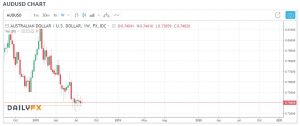Ahead of the Curve – Falling AUD to Help Exporting Businesses Amid Overall Strength in Melbourne
6 August 2018
The most significant macroeconomic development concerning the USD-AUD pair in the last few months has been the growing negative gap between Australian and US interest rates (rising US interest rates and unchanged Australian rates), this has helped drive a 5% fall in the Aussie currency against the USD this year. At US74.2¢, the Aussie is off by more than 8% from its late January peaks of above US81¢. Australian 10-year bond yields are now 0.31% points below comparative US yields, the widest negative gap since the early 1980s,when the relative rates inverted in 2000 the Aussie dollar fell below US50¢, against the current cross rate of around US74¢.
The falling AUD is a boon for Australian businesses with export revenues. i.e. agricultural commodity producers, hospitality & tourism and education services providers are expected to be the biggest winners.
The latest Property Council of Australia figures have shown that Melbourne’s office market vacancy has hit a 10-year low of 3.6% as white-collar jobs growth drives the take-up of commercial space.
It is the tightest vacancy rate in the country, down from 4.5% six months ago and nearing the record low of 3% 10 years ago.
Much of the demand has been concentrated in the A-grade segment, with 59,613 sq m of space added and 33,534 sq m withdrawn in the past six months. Meanwhile, more than 50 office projects, comprising 615,000 sq m, had plans approved, submitted or proposed in the fringe precincts.
The figures show yet again that businesses are booming in the Victorian capital, and since much of the increase in demand has centred on high-grade office space, it is reflective of the nature of the economic forces behind it – high valued-added services are on the rise. i.e. professional services such as banking, insurance, education, legal, technology and other businesses are being expanded and/or created that will provide much higher-quality growth in the years to come.
On-demand food delivery platform Foodora has announced that it would exit Australia at the end of August following a decision by its global parent company to focus on other markets.
The decision was made as the company faced legal challenges over the employment status of its riders – In June, the Fair Work Ombudsman launched a sham contracting case against Foodora, alleging it engaged its riders as independent contractors when they should really be employees entitled to minimum wages and conditions.
Apart from that, competition from similar online platforms such as Uber Eats, Deliveroo and Menulog have made the food delivery market increasingly crowded, threatening the viability of the players in the market.
We expect more regulation to follow and it is possible that online delivery platforms may be forced to offer minimum wages to their riders and if that happens, cost of delivery will have to go up, as on-demand food delivery services become mainstream.
There’s always exciting news in Victoria’s business community. For a confidential discussion about your next business transition telephone First Choice Business Brokers on 9899-1888.
By Lee Xie (Senior Project Manager)
We’d love to hear your opinion and continue the discussion. Please contact lee@firstchoicebb.com.au or 0405 459 528 to discuss.
_______________________________________________________________________________________
DISCLAIMER – Any financial information within this email has been compiled by First Choice Business Brokers to provide broad general information about business opportunities and the state of the market. First Choice Business Brokers makes no representations or warranties in relation to the financial information in this email. For purchasers looking to buy, we strongly recommend that you carry out your own investigation or consult a qualified accountant before making a purchase.
__________________________________________________________________________



